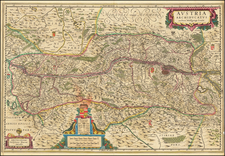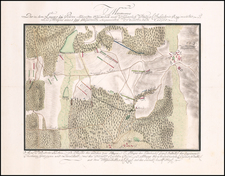An excellent example of Aaron Arrowsmith's monumental map of the the remnants of the Holy Roman Empire, first published in London in 1812.
The map is clear and seems to be designed for military use. It shows important details like topography and roads. J. Rowe did an excellent job with the title's calligraphy. This version of the map is slightly different from others because it lacks two sections at the bottom showing northern Italy. However, it still seems complete, as it includes longitude numbers and a publication line stating it was published in London by A. Arrowsmith, the Hydrographer to the Prince of Wales, on October 2, 1812.
The Duke of Cambridge, Adolphus, the seventh son of George III, is honored with this map by Arrowsmith. Adolphus studied at Göttingen University and learned military tactics in Prussia. He also served in the Hanoverian Army. Hanover had faced invasions from Prussia and France, making this map's dedication to him quite appropriate.
The maps was published at a fascinating moment in the region's history, which had, for the preceding centuries, been the vast majority of the territory of the Holy Roman Empire.
The formation of the Confederation of the Rhine in 1806 and the subsequent establishment of the German Confederation in 1815 marked significant reorganizations of the German states, reshaping the political landscape of Central Europe during a period of intense upheaval. These changes were closely tied to the broader context of Napoleonic Wars and the Congress of Vienna, reflecting the shifting balance of power and the evolving concept of statehood in early 19th-century Europe.
The Confederation of the Rhine was a direct outcome of French influence in Central Europe, especially following Napoleon's decisive victories over Austria and Russia. Napoleon sought to consolidate his gains and establish a buffer zone against his enemies to the east. Officially proclaimed on July 12, 1806, the Confederation was a union of various German states, excluding Austria and Prussia. It initially included 16 states but expanded to include 39. The member states were nominally sovereign but in reality, under French hegemony.
Dissolution of the Holy Roman Empire: The formation of the Confederation and the subsequent adherence of its members to Napoleon effectively marked the end of the Holy Roman Empire. Emperor Francis II dissolved the Empire on August 6, 1806, acknowledging the new political reality.
Following the collapse of Napoleon's empire in 1813, a series of events would lead to the formation of the German Confederation. The German Confederation was established at the Congress of Vienna (1814-15), a meeting of European powers aiming to restore order and balance after the Napoleonic Wars. The Confederation was part of a broader effort to create a stable and balanced European order. The German Confederation was a loose association of 39 German states, including both Austria and Prussia. It was neither a federal state nor a personal union, but a diplomatic and military alliance intended to maintain internal stability and external security.
The Federal Act (Bundesakte) ratified on June 8, 1815, formalized the Confederation. It represented a compromise between the desire for German unity and the reality of strong state sovereignties. The German Confederation was a conservative and reactionary body, primarily focused on preserving the status quo and suppressing liberal and nationalist movements. However, its very existence stimulated German nationalism and the desire for a more unified and liberal Germany.
Both the Confederation of the Rhine and the German Confederation were instrumental in the transformation of German and European politics. They reflected the shift from a loosely structured Holy Roman Empire to a more clearly defined arrangement of German states, setting the stage for future movements towards national unification.
The Arrowsmiths were a cartographic dynasty which operated from the late-eighteenth century to the mid-nineteenth. The family business was founded by Aaron Arrowsmith (1750-1823), who was renowned for carefully prepared and meticulously updated maps, globes, and charts. He created many maps that covered multiple sheets and which were massive in total size. His spare yet exacting style was recognized around the world and mapmakers from other countries, especially the young country of the United States, sought his maps and charts as exemplars for their own work.
Aaron Arrowsmith was born in County Durham in 1750. He came to London for work around 1770, where he found employment as a surveyor for the city’s mapmakers. By 1790, he had set up his own shop which specialized in general charts. Arrowsmith had five premises in his career, most of which were located on or near Soho Square, a neighborhood the led him to rub shoulders with the likes of Joseph Banks, the naturalist, and Matthew Flinders, the hydrographer.
Through his business ties and employment at the Hydrographic Office, Arrowsmith made other important relationships with Alexander Dalrymple, the Hudson’s Bay Company, and others entities. In 1810 he became Hydrographer to the Prince of Wales and, in 1820, Hydrographer to the King.
Aaron Arrowsmith died in 1823, whereby the business and title of Hydrographer to the King passed to his sons, Aaron and Samuel, and, later, his nephew, John. Aaron Jr. (1802-1854) was a founder member of the Royal Geographical Society (RGS) and left the family business in 1832; instead, he enrolled at Oxford to study to become a minister. Samuel (1805-1839) joined Aaron as a partner in the business and they traded together until Aaron left for the ministry. Samuel died at age 34 in 1839; his brother presided over his funeral. The remaining stock and copper plates were bought at auction by John Arrowsmith, their cousin.
John (1790-1873) operated his own independent business after his uncle, Aaron Arrowsmith Sr., died. After 1839, John moved into the Soho premises of his uncle and cousins. John enjoyed considerable recognition in the geography and exploration community. Like Aaron Jr., John was a founder member of the RGS and would serve as its unofficial cartographer for 43 years. Several geographical features in Australia and Canada are named after him. He carried the title Hydrographer to Queen Victoria. He died in 1873 and the majority of his stock was eventually bought by Edward Stanford, who co-founded Stanford’s map shop, which is still open in Covent Garden, London today.











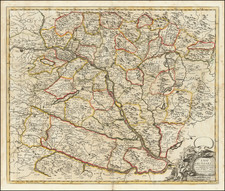
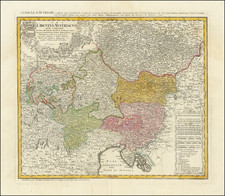
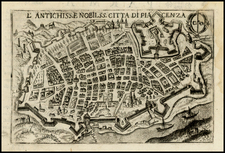
![Larii Lacus Vulgo Comensis Descriptio . . . [and] Terretorii Romani Descrip. [and] Fori Iulii Vulgo Frivli Typus](https://storage.googleapis.com/raremaps/img/small/67593.jpg)
